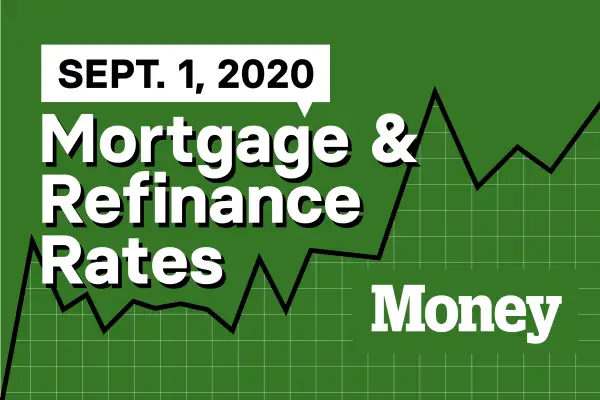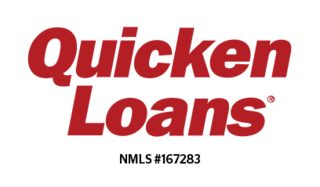Here Are Today's Best Mortgage & Refinance Rates for September 1, 2020

Borrowers with 700 credit scores were quoted an average rate of 3.436% to secure a 30-year fixed-rate purchase mortgage on Monday, according to Money's survey of over 8,000 lenders across the country. At this credit score, roughly the national average, the average rate for a 30-year refinance was 4.317%. Our rates include discount points and are for borrowers putting 20% down.
| 30-year fixed-rate purchase mortgage |
| 3.436% |
| Rates of August 31, 2020 |
Borrowers in Illinois were quoted the lowest mortgage rates on Monday—at a rate of 3.271%. Those in Colorado saw the highest average at 3.675%. Nationwide, borrowers with the highest credit scores, 740 and above, were quoted rates averaging 3.131%, while those with credit of 640 or below were given rates of 4.864%—a 1.733 percentage point spread.
You may be able to negotiate a lower rate if you shop around or if you have other accounts with the lender. Currently, some banks are hiking up advertised rates to keep demand in check, so you may be offered a lower rate if you reach out directly.
Freddie Mac’s widely quoted Primary Mortgage Market Survey put rates at 2.91% with 0.8 discount points paid for the week ending August 27. The mortgage purchaser’s weekly survey reflects borrowers who put 20% down on conforming loans and have excellent credit.
Refinance rates today
Money's survey shows that the best rate for a 30-year refinance for someone with a 740 credit score was 3.533% on Monday. Last September, the average mortgage rate (including fees) was 3.922%.
| 30-year fixed-rate mortgage refinance |
| 3.533% |
| Rates of August 31, 2020 |
A homeowner with a $200,000 mortgage balance currently paying 3.922% on a 30-year loan could potentially cut their monthly payment from $946 to $886 by financing at today’s lower rates. To determine if if it is worth it to refinance your mortgage, also consider the closing fees you paid on your current mortgage, how much your new lender is charging and how long you have left on your current mortgage. (Our picks for the best lenders for refinancing are here.)
What else is happening in the housing market right now?
The news of today, that could impact your home tomorrow.
While home prices have been rising since the pandemic related lockdowns started to ease, expect some markets to experience a decline over the next year, says CoreLogic's latest Home Price Index and Market Risk Indicator report. Areas hard hit by the COVID-19 resurgence are at the greatest risk of being overvalued.
Overall, home prices are up 5.5% year-over-year and 1.2% higher than in June, according to the HPI. However, the increase in home prices was not consistent, even within a metropolitan area. Overall, the New York metro areas saw price increase just 0.4%. On suburban Long Island, however, home prices increased 4.3% from last year as people left high-density urban areas for more space and distance from others.
“On an aggregated level, the housing economy remains rock solid despite the shock and awe of the pandemic. A long period of record-low mortgage rates has opened the flood gates for a refinancing boom that is likely to last for several years," said Frank Martell, CEO of CoreLogic. "In addition, after a momentary COVID-19-induced blip, purchase demand has picked up, driven by low rates and enthusiastic Millennial and investor buyers. Spurred on by strong demand and record-low mortgage rates, we expect to see more home building in 2021 and beyond, which should help support a healthy housing market for years to come.”
On the downside, the MRI indicate some markets are currently overvalued and are at a 70% risk of experiencing home price declined over the next year. Among the areas with the highest risk of price declines is Las Vegas, where prices are forecast to decline by 7.8% by July 2021. Other cities with more than a 70% chance of a price decrease are Miami; Lake Charles, Louisiana; and Prescott, Arizona.
Meanwhile, the overall pace of loans exiting forbearance has slowed to a point that roughly equals the number of homeowners entering the payment deferral plans. According to the Mortgage Bankers Association's Forbearance and Call Volume Survey. The overall percentage of loans in forbearance remained steady at 7.20%, representing about 3.6 million homeowners.
The share of Fannie Mae and Freddie Mac loans in forbearance decreased by 5 basis points to 4.88%, the 12th week in a row of declines. That reduction was offset, however, by increases in Ginnie Mae loans, portfolio loans, and private-label securities.
Mortgage Prediction of the Week
Expert views on what comes next.
Guy Cecala, chief executive and publisher of Inside Mortgage Finance, on how low mortgage rates could go:
The normal mortgage rate barometers—the 10-year Treasury rate and the Fed rate—already are at levels to support mortgage rates below 2.5%. The only reason mortgage rates are above that level now is that lenders have not felt the need to be very competitive and offer rates that low. So, it won’t take much to get to 2.5% or below.”
Bottom line:
5 Ways Your Finances Instantly Change When You Buy a House
When Will It Get Easier to Buy a Home? 8 Experts on the Nation's Housing Shortage

